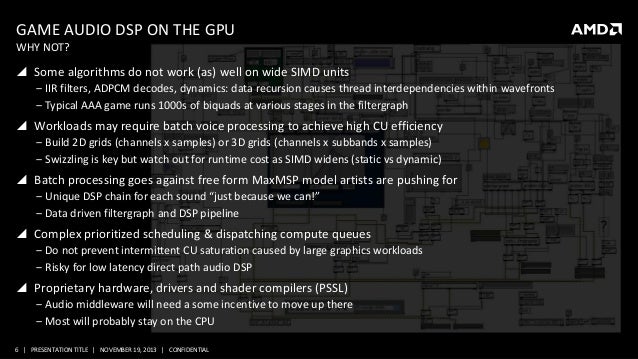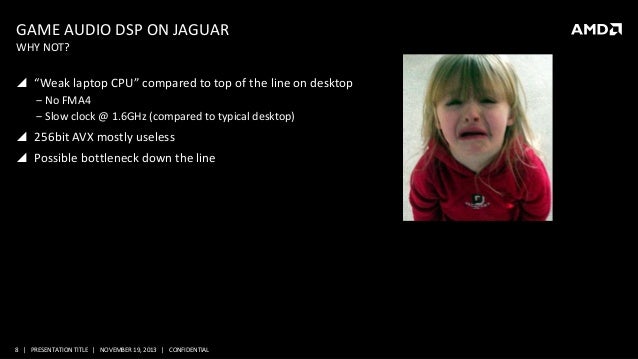The part of the article you’re underlining is not a direct quote from Mark Cerny. It’s the interpretation of the interviewer. Again, I think it makes little to no sense to have a gpu that most likely has hardware ray tracing acceleration and then not use it for audio. All of AMDs audio work is in using the gpu to do real-time 3D audio.
The datastructure for raytracing acceleration will be in RAM, it can be use from a custom 3d audio unit and without interfering with graphical workload. An example Quaz51 when he was here on B3d meet Christophe Balestra in an IGDA meeting when he was at ND working on Uncharted. He asked a question about PS3 architecture and one of the only change he would talk in public it would have done to PS3 is to have a specliazed chip for audio and let more SPU power for graphical task. When Audio is done on GPU it fights with graphical task and graphics seems more important than audio.

And now some of the default on CPU side disseapear, this is not a weak CPU anymore.

Last edited:

